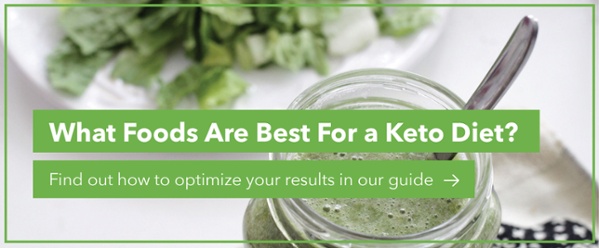
The twentieth century marked the beginning of using the ketogenic diet as a strategy to mimic the biochemical effects of fasting.
Fasting and the Ketogenic Diet: Powerful Tools for Medical Practices
Fasting has been used to minimize occasional seizures since 500 BCE. Historically, two methods used to combat physical illnesses were either limiting or providing an excess amount of certain chemical substances.1 Eventually, doctors discovered that if food were withheld from someone with seizures, then it was possible that their seizures could slow down or stop altogether; therefore, they looked for ways to produce this same effect without actual starvation. It wasn’t until 1921 that the ketogenic diet was discovered as a way to manage occasional seizures due to neurological challenges.2
The Ketogenic Diet Prevents the Endogenous Production of Glucose
In a typical American diet, carbohydrates comprise around 55% of overall caloric intake, ranging from 200 to 350 g/day. The negative side effects caused by refined carbohydrates were relatively unknown until recently. At the same time, a high intake of sugary foods can lead to a 44% increase or more in obesity and metabolic syndrome.
Based on current data, the largest estimated mortality rates have been associated with high sodium intake; low intake of nuts and seeds; high intake of processed meats; low intake of omega-3 fats; low intake of vegetables; low intake of fruits; and high intake of artificially sweetened beverages. The lowest estimated mortality has been associated with low polyunsaturated fats and unprocessed red meats.3 In addition to this, excess consumption of low-quality carbohydrates takes most of the percentage in the diet and leaves no space for healthier foods like nuts, unprocessed grains, fruits, and vegetables.

A ketogenic diet limits carbohydrates and protein intake moderately to less than 1g/lb body weight, unless individuals are performing heavy exercise involving weight training when the protein intake can be increased to 1.5g/lb body weight. This is a well-formulated ketogenic diet that helps prevent the endogenous production of glucose in the body via gluconeogenesis; however, it does not restrict fat or overall daily calories. People on a ketogenic diet initially experience rapid weight loss up to 10 lbs in two weeks or less. This diet has a diuretic effect, and some early weight loss occurs due to water weight loss followed by fat loss. Interestingly, with this diet plan, lean body muscle is largely spared. As a nutritional ketosis state sustains, hunger subsides, and an overall reduction in caloric intake helps to further weight loss.7,8,9
Estrogen vs. Testosterone
The goal of the keto diet is to stimulate a process in the body called ketosis.5 A few days after the carbohydrates are fully removed from the diet, the body is deprived of glucose. Therefore, it needs to find an alternative energy source and begins to burn stored fat. In the process, the liver converts fat to ketone bodies. Ketones become the new fuel, and as they accumulate in the blood, the body goes into ketosis. Theoretically, this is when fat burning turns to weight loss.6
Still, a more recent study concluded that this is not always the case for men and women. In this study, half of the mice went on the ketogenic diet, and the other half went on a regular diet as a control. The control diet was 7% percent fat, 47% carbohydrates, and 19% protein by mass. Meanwhile, the ketogenic diet was 75% fat, 3% carbohydrates, and 8% protein by mass. Opposite to what we may have expected, the weight loss anticipated from the ketogenic diet only happened in the male mice. After fifteen weeks, the males had a significant reduction in fat mass, but the female mice experienced no changes in weight. The scientists behind the study concluded that estrogen could be affecting the results; therefore, they decided to remove the ovaries of some of the female mice to redo the experiment. Interestingly, the female mice lacking the estrogen hormones had similar results to the male mice with the expected patterns of weight and fat loss.10
Duration in State of Ketosis Needed for Optimal Effects
Although the results obtained from a ketogenic diet are favorable for weight loss and other conditions, it is suggested that it should be followed for a minimum of two to three weeks or up to six to twelve months maximum. It is also important to continue monitoring the kidney function while on a ketogenic diet. In addition, the transition from a ketogenic diet to a regular diet should be gradual and well-controlled.11 BHB and other nutritional supplements can be used to assist a transition into a ketogenic diet,
How Do You Know Your Ketone Levels?
WHEN TO MONITOR FOR KETONES
- When blood glucose (sugar) is 14 mmol/L or more.
- During periods of illness (colds or flu), infections or injuries.
- On occasion —when on a keto diet—to make sure you getting to a state of ketosis.
HOW TO MONITOR FOR KETONES
There are different options you can use to monitor for ketones: CareTouch®, Keto-Mojo® Nova Max Ultra®, and Precision Xtra®. For any of these products, it is strongly suggested to follow the instructions carefully when monitoring!
WHAT TO DO WITH THE MONITORING RESULTS
The acceptable range for urine ketones –for ketosis– is negative or trace. Therefore, if you find ketones (small, moderate, or large) in the urine and have high blood glucose (sugar) levels on two or more occasions, you are strongly encouraged to contact your doctor for advice.
The following are some acceptable and non-acceptable ketone ranges:
- The acceptable range for blood ketones is less than 0.6 mmol/L.
- If the range is between 0.6 and 1.5 mmol/L, you should recheck your blood glucose and ketones in two to four hours.
- If the range is between 1.5 and 3.0 mmol/L, you may be at risk for developing ketoacidosis.
- If the range is more than 3.0 mmol/L, seek medical attention from your doctor.
Fasting, the pioneer to the ketogenic diet, has been used to mitigate many different physiological and neurological challenges, but the ketogenic diet is a practical alternative that allows for many of the positive health effects of fasting without depriving the body of energy. The ketogenic diet has an interesting history and continues to be utilized for refractory childhood neurological challenges. The use of the ketogenic diet has increased dramatically over the past few years, and we have a better understanding of the scientific basis of this unique diet.

1" McQuarrie, Irvine. “Epilepsy in children: the relationship of water balance to the occurrence of seizures,” Am J Dis Child, 38, no. 3 (1929): 451–467. doi:10.1001/archpedi.1929.01930090003001
2 "Wilder, R. M. “The effect on ketonemia on the course of epilepsy,” Mayo Clin Bull, 88, no. 21 (1921): 307. doi:10.1001/archpedi.1927.04130140038005
3 “Martin-McGill, K. J., Lambert, B., Whiteley, V. J., Wood, S., Neal, E. G., Simpson, Z. R., Schoeler, N. E., “Understanding the core principles of a 'modified ketogenic diet': a UK and Ireland perspective,” J Hum Nutr Diet, 33, no. 3 (2019): 385–390. https://onlinelibrary.wiley.com/doi/abs/10.1111/jhn.12637
4 “Jagadish, S., Payne, E. T., Wong-Kisiel, L., Nickels, K. C., Eckert, S., Wirrell, E. C. “The Ketogenic and Modified Atkins Diet Therapy for Children With Refractory Epilepsy of Genetic Etiology,” Pediatr. Neurol, 94 (2019): 32–37. https://doi.org/10.1016/j.pediatrneurol.2018.12.012
5 “Mohorko, N., Černelič-Bizjak, M., Poklar-Vatovec, T., Grom, G., Kenig, S., Petelin, A., Jenko-Pražnikar, Z.. “Weight loss, improved physical performance, cognitive function, eating behavior, and metabolic profile in a 12-week ketogenic diet in obese adults,” Nutr Res, 62 (2019): 64–77. doi: 10.1016/j.nutres.2018.11.007
6 Ma, S., and Suzuki, K. “Keto-Adaptation and Endurance Exercise Capacity, Fatigue Recovery, and Exercise-Induced Muscle and Organ Damage Prevention: A Narrative Review,” Sports (Basel). 7, no. 2 (2019): 40. doi: 10.3390/sports7020040
7 Oh, R. and Uppaluri, K. R. Low Carbohydrate Diet. Florida: StatPearls Publishing, 2019.
8 Broom, G. M., Shaw, I. C, Rucklidge, J. J. “The ketogenic diet as a potential treatment and prevention strategy for Alzheimer's disease,” Nutrition, 60 (2019):118–121. doi: 10.1016/j.nut.2018.10.003
9 Włodarek D. “Role of Ketogenic Diets in Neurodegenerative Diseases (Alzheimer's Disease and Parkinson's Disease),” Nutrients, 11, no. 1 (2019): 169. doi: 10.3390/nu11010169
10Guzel, O., Uysal, U., Arslan, N. “Efficacy and tolerability of olive oil-based ketogenic diet in children with drug-resistant epilepsy: A single center experience from Turkey,” Eur. J. Paediatr. Neurol, 23, no. 1 (2019): 143–151. doi: 10.1016/j.ejpn.2018.11.007
11 Armeno, M., Araujo, C., Sotomontesano, B., Caraballo, R. H. “Update on the adverse effects during therapy with a ketogenic diet in paediatric refractory epilepsy,” Rev Neurol, 66, no. 6 (2018): 193–200.













.jpg)




